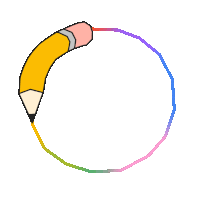
Oct 02, 2019
National Batik Day 2019
This Doodle’s Key Themes
Today’s Doodle celebrates and was made using Batik, a technique for decorating fabric using wax and pigment to create complex, colorful patterns. Batik artisans cover fabric with a wax design, add dye, and finally remove the wax to reveal the pattern underneath. Repeating the process with different colored dyes can create intricate, multi-layered designs to adorn textiles and clothing.
Indonesia has been known for its Batik since the 4th or 5th century, and it has been said that Indonesian batik dye techniques and designs are as numerous as its islands. The designs and colors vary in accordance with the villages and ethnic groups that have spread out in different islands.
In Java, batik fabric historically lent itself naturally to fashion, art, and culture, because cotton and beeswax were readily available. Specific patterns and colors came to be associated with well-known families, or to bring health or good fortune. Members of the Javanese royal court created exquisite batik prints using finely woven textiles imported from Europe and India. Indonesian craftspeople proved to be ingenious with batik methods, innovating techniques such as woodblock printing.
Batik has been both an art and craft for centuries and is part of an ancient tradition. The word batik is derived from the Javanese word ‘amba’, means ‘to write’, the suffix ‘titik’ means little dot or to make dots. In a manuscript on a lontar leaf originating from around 1520 AD which was found in Galuh, Southern Cirebon (West Java), it is written that batik also means ‘seratan,’ which in Javanese means ‘writing.’
Eventually, batik came to be known as the fabric of Indonesia. For those in Indonesia today, this would be a good time to wear your best batik clothing in honor of this traditional art form and the skilled artisans who create it.
Happy National Batik Day, Indonesia!
By creating today’s Doodle using white fabric dyed with natural pigments, indigo, and osage orange, artist Lydia Nichols learned first-hand how involved the process of making Batik is.
See below for behind-the-scenes process photos.
Wax applied directly to muslin
Osage orange appears light yellow after only one dip
Applying the second coat of wax by hand using a tjanting on a maddar dyed cloth
Indigo dye on top of maddar; as the indigo oxidizes, it changes from green to blue in color
Once all wax application and dying is complete, the fabric is boiled in order to remove the wax.
After the wax rises and hardens, it can be removed, and the fabric can be hung to dry.
Drafts of the Doodle
Where this Doodle appeared
Discover more Doodles by color
Did you know?
The very first Doodle launched as an “out of office” message of sorts when company founders Larry and Sergey went on vacation.
Learn MoreDid you know?
The first Doodle launched in 1998, before Google was officially incorporated.
Learn MoreDid you know?
The first same day Doodle was created in 2009 when water was discovered on the moon.
Learn MoreDid you know?
Doodle for Google student contest winners have gone on to become professional artists
Learn MoreDid you know?
The time it takes from sketch to launch for a Doodle varies widely: some have taken years and others just a few hours!
Learn MoreDid you know?
Hundreds of Doodles launch around the world every year. Often, several different ones are live in different places at the same time!
Learn MoreDid you know?
Our most frequently recurring Doodle character is Momo the Cat - named after a real-life team pet!
Learn More